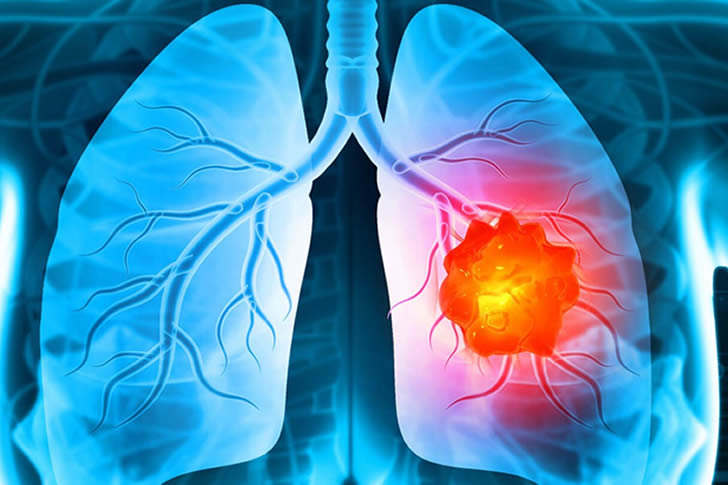Guide to Understanding Lung Cancer
Lung cancer remains one of the most common and serious types of cancer, affecting millions of people worldwide. Understanding lung cancer is crucial for prevention, early detection, and effective treatment. This comprehensive guide provides essential information on causes, diagnosis, treatments, and more.

What is Lung Cancer?
Lung cancer originates in the lungs and is primarily caused by the abnormal growth of cells, which can lead to tumors and interfere with the respiratory system’s ability to function properly. It is classified into two main types based on the appearance of lung cancer cells under a microscope: non-small cell lung cancer (NSCLC) and small cell lung cancer (SCLC). NSCLC accounts for about 85% of cases and includes adenocarcinoma, squamous cell carcinoma, and large cell carcinoma. SCLC is less common and tends to spread more quickly.
Causes and Risk Factors
The primary cause of lung cancer is tobacco smoking, which is responsible for about 85% of lung cancer cases in the U.S. Exposure to secondhand smoke, radon gas, asbestos, and other carcinogens also significantly increases risk. Genetic factors and family history of lung cancer can contribute, though these are less common.
- Smoking: The risk of lung cancer increases with the number of cigarettes smoked over time; doctors refer to this as “pack-years.”
- Environmental Exposures: Radon, a naturally occurring gas that comes from rocks and dirt and can get trapped in houses and buildings, is the second leading cause of lung cancer.
- Occupational Exposures: Exposure to asbestos, certain chemicals, and heavy metals can increase risk, especially if the person also smokes.
Symptoms of Lung Cancer
Lung cancer symptoms often do not appear until the disease is already in an advanced stage, but some early signs can include:
- Persistent cough, changes in cough pattern, or a “smoker’s cough”
- Coughing up blood or rust-colored spit/phlegm
- Chest pain that worsens with deep breathing, coughing, or laughing
- Hoarseness
- Weight loss and loss of appetite
- Shortness of breath
- Feeling tired or weak
- Infections such as bronchitis and pneumonia that don’t go away or keep coming back
Diagnosis
Early diagnosis of lung cancer can be challenging because symptoms often appear only in advanced stages. If lung cancer is suspected, the diagnostic process may include:
- Imaging Tests: X-rays and CT scans are used to find abnormal masses or nodules in the lungs.
- Sputum Cytology: Looking at sputum under the microscope can sometimes reveal the presence of lung cancer cells.
- Biopsy: A sample of abnormal cells may be removed in a procedure called a biopsy. Various techniques can be used to collect this tissue, including bronchoscopy, mediastinoscopy, or needle biopsy.
Treatment Options
Treatment depends on the type of lung cancer, the stage, and the patient’s overall health. Options may include:
- Surgery: To remove the tumor and surrounding lung tissue.
- Radiation Therapy: This uses high-energy rays to target and kill cancer cells.
- Chemotherapy: Uses drugs to kill cancer cells, usually by stopping the cancer cells’ ability to grow and divide.
- Targeted Therapy: Targets specific abnormalities present within cancer cells. For example, some therapies target genetic mutations that might be found in cancer cells.
- Immunotherapy: Helps the immune system recognize and destroy cancer cells.
Prevention and Risk Reduction
While not all cases of lung cancer can be prevented, there are several ways to reduce risk:
- Quit Smoking: This is the single most important step you can take.
- Avoid Exposure to Carcinogens: Reduce exposure to radon, asbestos, and other known cancer-causing agents.
- Eat a Healthy Diet: A diet rich in fruits and vegetables may help reduce the risk of lung cancer.
- Regular Check-ups: Especially for those who smoke or have smoked in the past, regular check-ups can help catch lung cancer early.
Conclusion
Understanding lung cancer is essential for effective prevention, early detection, and successful treatment. By becoming knowledgeable about the risk factors and treatment options available, individuals are better equipped to manage their health proactively and seek appropriate medical care when necessary. This is particularly important for those at higher risk, such as smokers and those with a family history of the disease. For survivors, staying informed means understanding how to monitor for signs of recurrence and manage long-term health post-treatment. Even if you are not directly affected, knowing about lung cancer can empower you to support friends and family who may be vulnerable. Ultimately, education is a powerful tool in the fight against lung cancer, providing critical insights that can lead to improved outcomes and survival rates.







Recent Comments